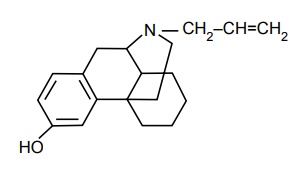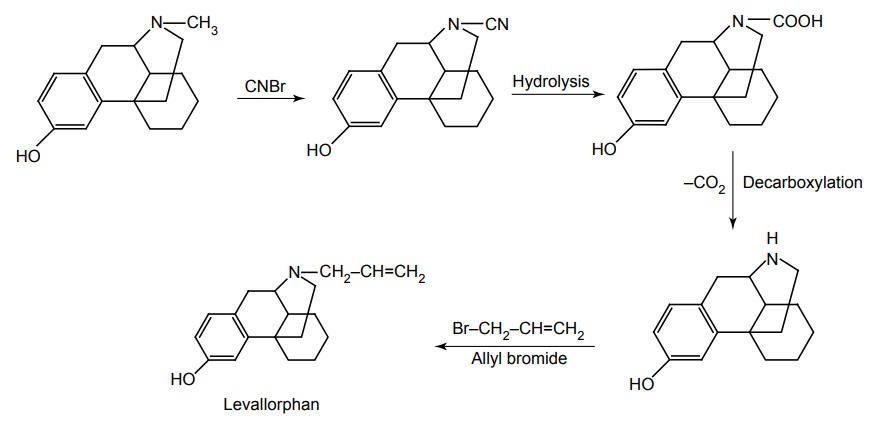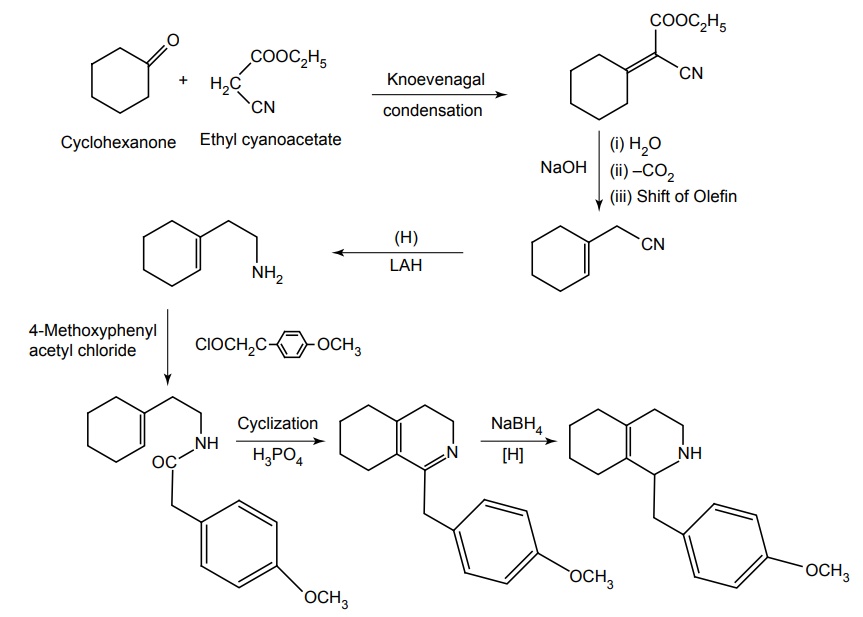Classification of Narcotic antagonists
| Home | | Medicinal Chemistry |Chapter: Medicinal Chemistry : Narcotic Analgesics
i. Pure antagonists (e.g. naloxone, naltrexone). ii. Partial agonists of nalorphine type (e.g. Nalorphine, levallorphan, and cyclazocine). iii. Partial agonists of morphine type (e.g. propiram, profadol).
CLASSIFICATION Pure antagonists (e.g. naloxone, naltrexone). Partial agonists of nalorphine type (e.g. Nalorphine, levallorphan, and cyclazocine). Partial agonists of morphine type (e.g. propiram, profadol). Nalorphine precipitates withdrawal symptoms and produces behavioural disturbances in addition to the antagonism action. Naloxane is a pure antagonist with no morphine like effect. It blocks the euphoric effect of heroin when given before it. Naltrexone became clinically available in 1985 as a new narcortic antagonist. Its action resembles those of naloxone, but naltrexone is well absorbed orally, and is long acting. Necessitating only a dose of 50–100 mg. therefore, it is useful in narcotic treatment programmes, where it is desired to maintain an individual on chronic therapy with a narcotic antagonist. In an individual taking naltrexone, subsequent injection of an opiate will produce little or no effect. Naltrexone appears to be particularly effective for the treatment of narcotic dependence in addicts who have more to gain by being drug free rather than drug-dependent. Naltrexone is at least 17 times more potent than nalorphine in morphine-dependent humans and twice as potent as naloxone in precipitating withdrawal symptoms. Synthesis From: Morphine Properties and uses: Nalorphine has a direct antagonistic effect against morphine, meperidine, methadone, and levorphanol. It has little antagonist effect towards barbiturate or general anaesthetic depression. However, it has strong analgesic properties, but it is not acceptable for such use owing to the high incidence of undesirable psychotic effects. Dose: By I.V. 2 to 10 mg per dose; usually, 5 mg repeated twice at 3 min intervals, if required. Synthesis From: Thebaine Properties and uses: It is white or almost white hygroscopic crystalline powder, Soluble in water, soluble in ethanol, and insoluble in toluene. It is almost seven times more active than nalorphine in antagonizing the effects of morphine. It shows no withdrawal effects after long-term administration. It lacks not only the analgesic activity shown by other antagonists, but also all of the other agonist effects. At higher doses, Naloxone may be useful in the treatment of shock and spinal cord injury. Assay: Dissolve the sample in ethanol and add 0.01 M hydrochloric acid. Perform potentiometric titration using 0.1 M ethanolic sodium hydroxide. Storage: It should be stored in well-closed airtight containers and protected from light. Dose: Usual dose by parenterally 0.4 mg (1 ml)/day Dosage forms: Naloxone injection B.P., Neonatal naloxone injection B.P. Synthesis Properties and uses: It is a white or almost white powder, hygroscopic insoluble in methylene chloride, freely soluble in water, and slightly soluble in ethanol. Its opiod antagonist activity is reported to be two to nine times that of naloxone and 17 times that of nalorphine. Assay: Dissolve the sample in ethanol, add 0.1 M hydrochloric acid. Perform potentiometric titration, using 0.1 M sodium hydroxide. Storage: It should be stored in well-closed airtight containers and protected from light. Dose: For opioid dependence: Adult: As hydrochloride: Initially, 25 mg; increase to 50 mg daily, if no withdrawal signs occur. Maintenance: 350 mg weekly given as 50 mg daily or divided in 3 doses (given for 3 days in a week) for improved compliance. As an adjunct in the management of alcohol dependence: Adult: As hydrochloride: 50 mg daily. Properties and uses: Levallorphan resembles nalorphine in its pharmacological action and is about five times more effective as a narcotic antagonist. It is useful in combination with analgesics, such as meperidine, alphaprodine, and levorphanol to prevent the respiratory depression usually associated with these drugs. Synthesis Route I.From: Morphinan Route II. From: Cyclohexanone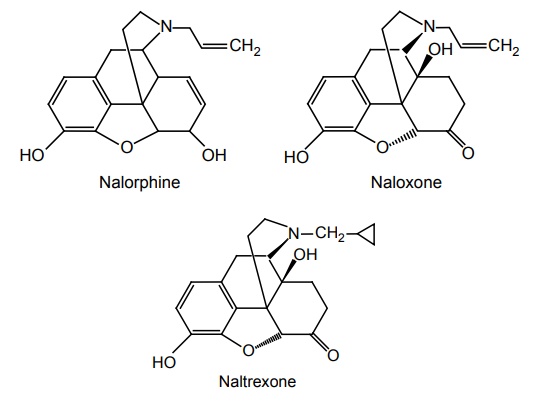
a. Nalorphine (Nalline)
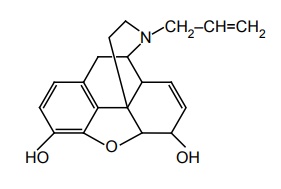
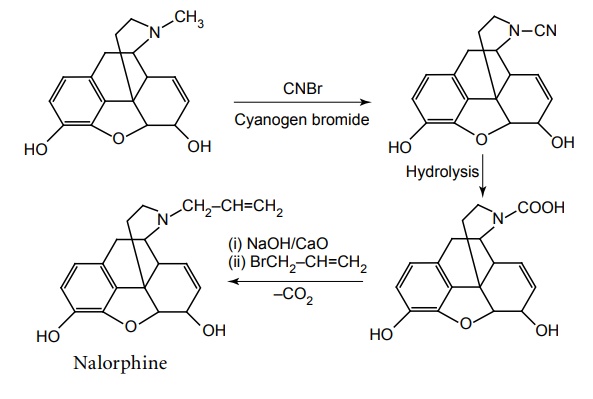
b. Naloxone (Narcotan, Nex)
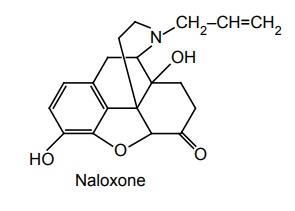
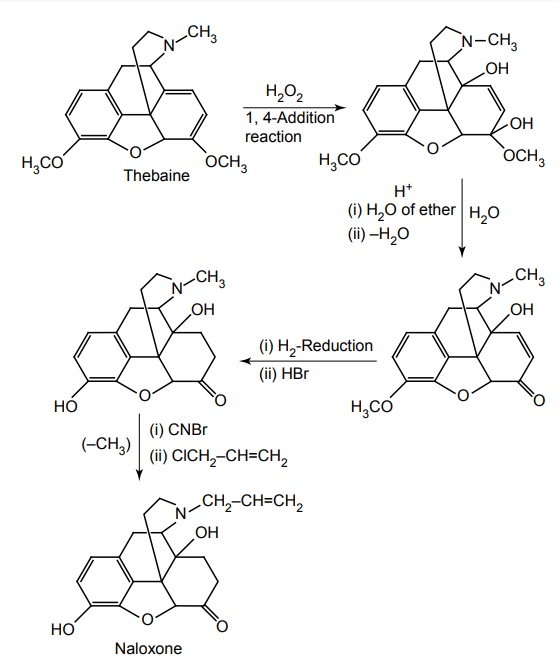
c. Naltrexone (Naltima)
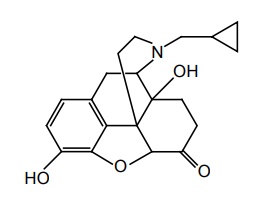
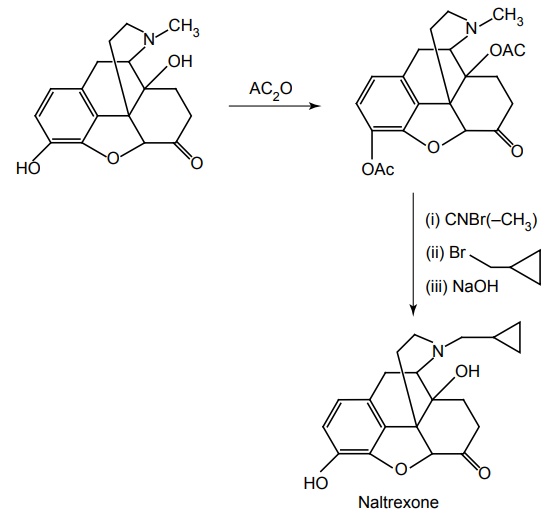
d. Levallorphan
